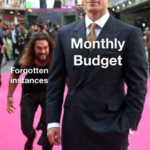
Decentralized Applications (dApps)
Hey there fellow football fans! Are you looking to build a decentralized application using Solidity?
Well, you’ve come to the right place! In this blog, we’ll dive into the world of Solidity decentralized applications and explore some examples using the legendary Liverpool FC.
First off, let’s talk about Solidity.
Solidity is a programming language used to write smart contracts on the Ethereum blockchain.
Smart contracts are self-executing contracts that allow for automated transactions and can be used to build decentralized applications (dApps).
So, how can we use Solidity to build a dApp? Let’s take a look at an example.
One example of a dapp that could be created using Solidity is a platform for buying and selling LFC merchandise.
This dapp would allow fans to purchase LFC merchandise directly from other fans, without the need for a centralized intermediary like an online store.
Here’s an example of what the Solidity code for this dapp might look like:
pragma solidity ^0.8.0;
contract LFCMerchandise {
// Declare a struct for each item of merchandise
struct Merchandise {
string name;
uint price;
address payable seller;
bool sold;
}
// Declare a mapping of merchandise IDs to their corresponding items
mapping(uint => Merchandise) public merchandise;
// Declare a counter for the merchandise IDs
uint public merchandiseCounter;
// Declare an event to emit when a merchandise item is added
event ItemAdded(string name, uint price, uint id);
// Declare a function to add a new item of merchandise
function addItem(string memory _name, uint _price) public {
// Increment the merchandise counter
merchandiseCounter++;
// Add the new merchandise item to the mapping
merchandise[merchandiseCounter] = Merchandise(_name, _price, payable(msg.sender), false);
// Emit an event indicating that the new item has been added
emit ItemAdded(_name, _price, merchandiseCounter);
}
// Declare a function to buy an item of merchandise
function buyItem(uint _id) public payable {
// Require that the merchandise item exists
require(_id > 0 && _id <= merchandiseCounter, "Invalid merchandise ID");
// Get the merchandise item from the mapping
Merchandise memory item = merchandise[_id];
// Require that the item has not already been sold
require(!item.sold, "Merchandise item already sold");
// Require that the buyer has sent enough ether to cover the price of the item
require(msg.value >= item.price, "Insufficient funds");
// Transfer the ether to the seller
item.seller.transfer(msg.value);
// Mark the item as sold
item.sold = true;
// Update the item in the mapping
merchandise[_id] = item;
}
}
In this code, we’re defining a smart contract called “LFCMerchandise” that allows users to buy and sell LFC merchandise.
The contract contains a struct called “Merchandise” that defines each item of merchandise,
A mapping called “merchandise” that associates each merchandise ID with its corresponding item,
And a merchandiseCounter that keeps track of the number of items of merchandise.
We’re also defining two functions: “addItem” and “buyItem“.
The addItem function allows users to add a new item of merchandise to the contract by specifying its name and price.
The buyItem function allows users to buy an existing item of merchandise by specifying its ID and sending enough ether to cover its price.
Conclusion
So, there you have it! That’s a brief introduction to building a decentralized application using Solidity.
Of course, there’s a lot more to learn, such as deploying your smart contract to the Ethereum network, handling errors and exceptions, and designing an effective user interface.
But this should act as a good starting point to build dApps.
Peace out!








